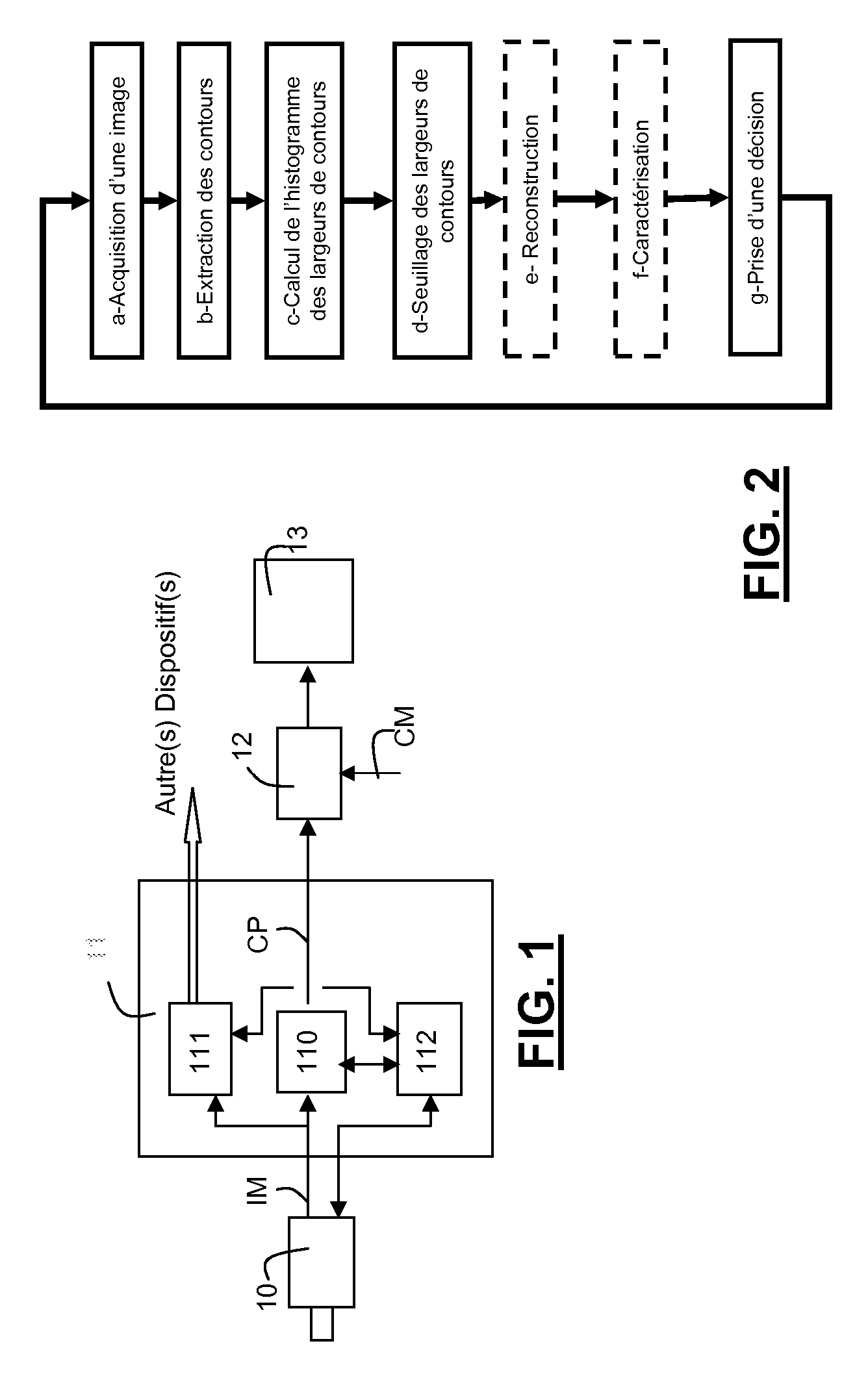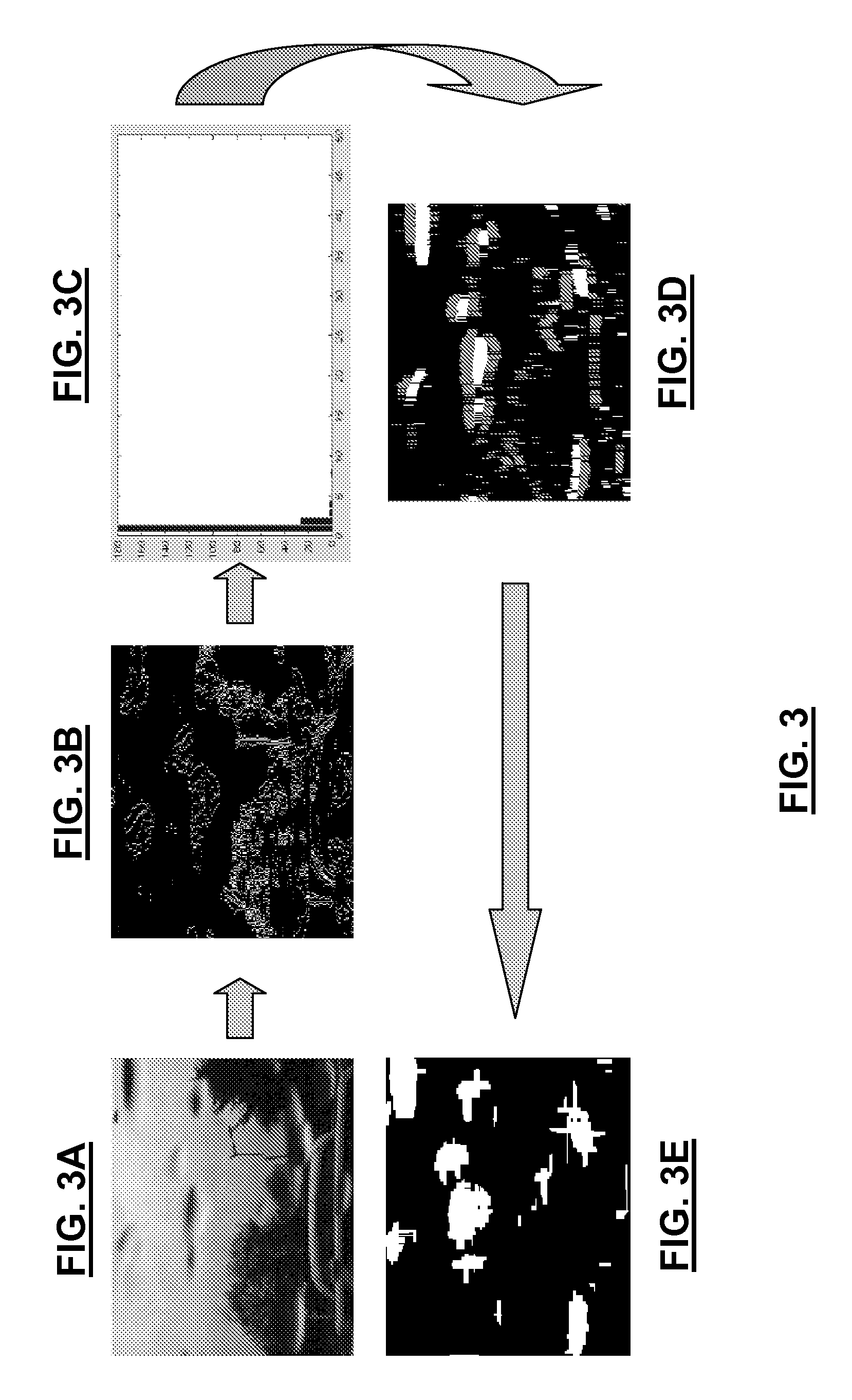Method for detecting rain on a windscreen
a windscreen and rain detection technology, applied in the field of motor vehicles, can solve the problems of camera focused at infinite, not focused on the windscreen, and would be totally unsuitable for detecting raindrops on the windscreen, and achieve the effect of increasing the reliability of detecting raindrops
- Summary
- Abstract
- Description
- Claims
- Application Information
AI Technical Summary
Benefits of technology
Problems solved by technology
Method used
Image
Examples
Embodiment Construction
[0048] These figures are extremely diagrammatic in order to preserve their clarity.
[0049] With reference to FIG. 1, the automatic windscreen wiper control device triggers the operation of the windscreen wipers of vehicle 13 when raindrops are detected on the windscreen of a vehicle. It comprises primarily a camera 10, a processing unit 11 and a control circuit 12.
[0050] Camera 10 is installed in the cab interior of the vehicle, opposite a “wipable” zone of the windscreen 14, that is to say a zone which is swept by one of the wiper blades while in operation. The camera is fitted for example on the dashboard approximately 30 cm from the windscreen. The camera takes successive images of the road in front of the vehicle through the windscreen. It has a horizontal aperture of approximately 40° and a vertical aperture of approximately 30°. Of course, the position and angular apertures of the camera are shown here by way of simple illustration. Preferably, it is configured so as to have ...
PUM
 Login to View More
Login to View More Abstract
Description
Claims
Application Information
 Login to View More
Login to View More - R&D
- Intellectual Property
- Life Sciences
- Materials
- Tech Scout
- Unparalleled Data Quality
- Higher Quality Content
- 60% Fewer Hallucinations
Browse by: Latest US Patents, China's latest patents, Technical Efficacy Thesaurus, Application Domain, Technology Topic, Popular Technical Reports.
© 2025 PatSnap. All rights reserved.Legal|Privacy policy|Modern Slavery Act Transparency Statement|Sitemap|About US| Contact US: help@patsnap.com



